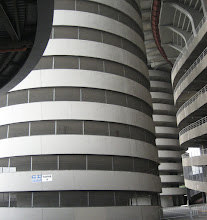This is the seventh
post in a weekly series highlighting Italy’s four World Cup wins from
qualifications to the finals. Read
the sixth post here.
The beginnings of the tournament held in Spain in 1982 can
be characterized by two words: change and scandal. As for the change, FIFA
expanded the tournament to include 24 teams for the first time.
This meant that the format for the tournament needed change,
too. For the group stages, the nations were divided into four groups of six,
numbered one through six. Of these groups, the top two teams would advance to
the next round.
The twelve teams advancing into the next round were then
divided into four groups of three, numbered one through four. The winners of
each group of three would advance to the semifinals. This was the only time
this format was used.
As for scandal, there was plenty to find. One big scandal
was the draw, held in Madrid in January. FIFA had tried to set up the seeded
teams, but made some mistakes. For example, England were seeded, having not
even qualified since 1970 and barely qualified this time around, whereas
countries like France and Belgium, who had better records were not seeded.
FIFA had also come up with a scheme to try to keep the South
Americans from being drawn into the same group, but someone didn’t get that
memo, causing confusion. Then Scotland and Belgium were put in the wrong groups
and later changed to different groups. And as if that wasn’t bad enough, during
the draw, one of the cages that released the balls jammed while another one
cracked in half. Ooops! Between FIFA and host nation Spain, confidence in
pulling this one off was very low.
 |
| Scandalous |
For Italy, the scandal had come two years prior and involved
one Paolo Rossi and his teammates at Perugia. They were accused in a
match-fixing scandal and Rossi was given a three year suspension, which was
later lowered to only two years. That two years ended in April of 1982, and
National Team Coach Enzo Bearzot called him up in good faith, something not a
lot of managers would do. The Italian media were not thrilled with this move,
but it is one that would prove to be pivotal in this tournament.
Qualifications
As was tradition, hosts Spain and reigning champions
Argentina would qualify automatically. This left 22 spots for 107 teams to
contest for. These spots were allocated by region as follows: UEFA - 13 spots
for 32 nations (not including Spain’s automatic berth,) CONMBEOL - three spots
for eight nations (not including Argentina’s automatic berth,) CONCACAF - two
spots for 15 nations, CAF - two spots for 29 nations, and AFC & OFC - two
spots for 20 nations.
Italy was drawn in UEFA group five, including Yugoslavia,
Greece, Denmark, and Luxemburg. After playing eight games, they finished second
in the group to Yugoslavia, on 12 points. Their record was a little shaky for a
team of their caliber, with five wins, two draws, and a loss. But they did
qualify.
 |
| Naranjito... the best World Cup mascot ever. |
And Then There Were
24…
The expanded format included the following nations who
qualified: Algeria, Argentina, Austria, Belgium, Brazil, Cameroon, Chile,
Czechoslovakia, El Salvador, England, France, Honduras, Hungary, Italy, Kuwait,
New Zealand, Northern Ireland, Peru, Poland, Scotland, Spain, Soviet Union,
West Germany, and Yugoslavia.
The World Cup history is always the reluctant foreground to
a political landscape. If you will remember from Italy’s last triumph in 1938,
Nazi Germany had annexed Austria just before the tournament started. This time,
the World Cup would feature postwar West Germany instead. Additionally,
although this World Cup was played 34 years ago, it is curious to note how many
countries that participated in 1982 which no longer exist today. No matter how
much politics change, no matter how much the tournament itself has evolved, the
World Cup is still a beacon of sport in an unsettled world.
 |
| The Azzurri starting 11 in 1982 |
Gli Azzurri, circa
1982
Coached by Enzo Bearzot since 1975, this National Team was a
dream squad, with the likes of Dino Zoff in goal, Paolo Rossi, Marco Tardelli,
Claudio Gentile, Bruno Conti, Gaetano Scirea, Franco Baresi, Alessandro
Altobelli, Giuseppe Bergomi, and Daniele Massaro, to name a few. However, the
media would have a hard time believing that this group of players, finishing second
in their qualification group, was going to do anything special in this
tournament.
Previously, they had finished in fourth place in Euro 1980,
despite Italy being the host nation. And in the 1978 World Cup, Bearzot had
seen his team go out in the second round to Brazil. So you could say that there
was skepticism going into the tournament. But isn’t the chance to prove someone
wrong the perfect catalyst for greatness?
Next week: read about the Group Stage of the 1982 World Cup
This is part seven of a 12 week series I originally wrote for the now
defunct Italy World Cup Blog five years ago. The series will now appear here
weekly as a tribute to the Azzurri teams of the past.
Quattro Stelle: 1982 - Qualifications
 Reviewed by Elaine
on
Rating:
Reviewed by Elaine
on
Rating:
 Reviewed by Elaine
on
Rating:
Reviewed by Elaine
on
Rating:


